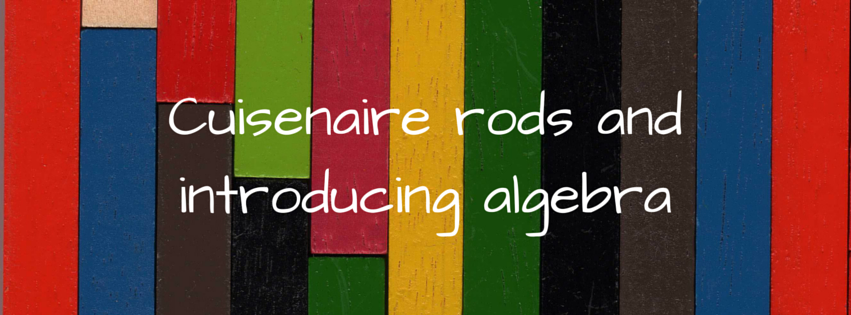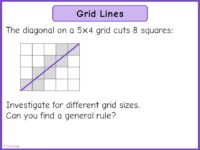So I had one of those lessons today that reminds me exactly how great this job can be. I snuck in an extra blog over half term about using Cuisenaire rods to introduce algebraic expressions with Year 7, and I guinea-pigged the lesson with them today – it worked so well, and I imagine would have been even better if we’d actually had sets of Cuisenaire rods rather than working on square paper.
We started by playing around with the Cuisenaire interactive from NRich – none of them had used the rods at primary, so I thought it was probably important that we got used to the basics. I started by building a couple of bonds to 10, then getting the pupils to explain what was there. They started by using numbers, referring to “the eight block” and “the two block”, but quickly started describing them as “brown” and “red”, and saying things like “brown plus red” quite naturally.I prompted them towards writing down “sentences” for the blocks we built together – so “brown + red = orange”. Once I’d written a couple out in full, someone suggested we just use initials, so this became t + r = o (brown is “tan” in Cuisenaire language – yeah, that threw me too).
I gave them some square paper and got them to build some more expressions equal to one orange (i.e. 10). They would have happily done this all lesson if I’d let them!


A few pupils had gone for 10 white blocks make one orange, but we had a big mixture of notation, including 10(w), 10 x w, w x 10 and just 10w. Interestingly, no-one wrote down any incorrect notation when simplifying (like writing w to the power 10, which normally happens if I do algebra without manipulatives). We quickly got to grips simplifying the rest of their expressions too.
Next up, we had a go at the task I’d written (here) – they found this really straightforward, but weirdly started introducing 1s in – so writing 2g + 1r instead of 2g + r. We had a quick chat about that.
I wasn’t planning to do any work with equations, but as we had a spare ten minutes, I just asked them to spot any “relationships” – I didn’t use the word “equation”. They came up with loads:

A couple of really interesting things came up here. Firstly, the four-part equation (5th line down) seemed really natural to most of them, and they were comfortable with the fact that if A = B and B = C then A = C and so on. Secondly (and it’s boxed because we talked about it quite a lot), the last two equations came from the 1st and 4th rod pictures – there’s so much scope here for further work on equations!
(Header image: By Celcom, CC BY 3.0, commons.wikimedia.org/w/index….)

